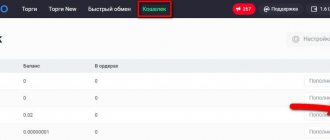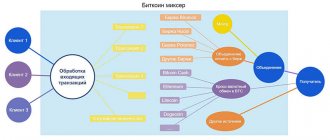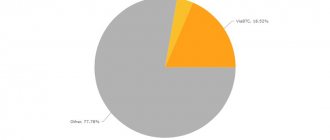Find out more about Bitcoin fees
Bitcoin is made up of blocks . Blocks are a collection of transactions that are currently limited to no more than 1,000,000 bytes and are designed such that on average only 1 new block can be created every ~10 minutes. The people who create these blocks are known as miners . These miners can choose which transactions they will contribute to the next block.
Bitcoin miners are paid all commissions for transactions included in the next block. Thus, it is in their interest to maximize the amount of money, and therefore add as many profitable transactions to the block as possible. Therefore, they are trying to fit into this 1,000,000 bytes transactions for which they are willing to pay the highest possible commissions.
Bitcoin miners themselves do not evaluate the amount of a transaction, but rather its weight (number of bytes), since they can only create blocks of up to 1,000,000 bytes or less. That is, the transaction processing fee is also not based on the transaction amount, but a fee is charged for each byte .
How to make a profitable transaction fee
As already mentioned, the greater the load on the system, the higher the commission rate. In general, users themselves can regulate this process by setting the total amount of funds they are willing to pay for the transfer. However, this factor will greatly influence how quickly the transaction is completed.
That is why most crypto wallets take responsibility and independently set for you the most optimal commission amount, which is currently considered higher than the market average. However, you should not completely trust them.
It is best to independently check the current state of the network and manually set a commission rate for the transfer that will allow it to get into the nearest block of the Blockchain system, but will not have too high a cost.
How to do it:
- Special services can help you with this (we will talk about them in more detail below), which show statistics of recent transactions and the commissions charged for them. Knowing the approximate figures that others are currently paying, you will determine the average rate on the market and be able to set the optimal amount of funds to successfully complete your transfer.
- Also, to determine the optimal cryptocurrency commission and to increase the speed of the operation, use the “dynamic commission change” function, which many crypto wallets now support. It will be useful if the payment that you previously charged for transferring a crypto coin turns out to be too small, you can always increase it to speed up the process of sending funds.
Thus, you will not have to wait for hours or days until your financial transaction with the previously incorrectly selected commission is finally satisfied.
4.
Why are commissions sometimes so expensive?
Sometimes it happens that transaction fees turn out to be incredibly huge. The reason for this is that it uses a 95% confidence approach. If the block ends now , then perhaps the commission will be approximately 20 satoshi/byte. But here we must take into account that another hour will pass before this particular block is completed, and during this time there will still be many new transactions.
Sometimes this level of confidence is not needed (for example, it is not such an important transaction, or you do not want to pay a large commission), and then you can take advantage of lower rates for sending money.
Why do commissions exist?
To ensure that limited block space is allocated to those who value it most and who are willing to pay the most for it, Bitcoin has a fee market. Essentially, the mempool acts as a decentralized clearinghouse - users post their bids for a block space in the mempool (in the form of transactions with a fee attached), and miners will process the transactions and post them into the next block based on the fee attached. The higher your fee, the more likely it is that your transaction will win over competing transactions and that the miner will select your transaction to be included in the next block.
Reduced fees for Bitcoin transactions
The Bitcoin website lists fast peer-to-peer transactions, international payments and low payment processing fees as some of the main advantages of the cryptocurrency. It's no surprise that Bitcoin has become extremely popular as a way to send money digitally around the world, as it solves critical problems with fiat currency transactions.
Last year, the number of Bitcoin transactions grew steadily. There were 20 million transactions in the third quarter, up from 17.6 million in the second quarter. Moreover, since February 2020, the number of Bitcoin transactions has grown by at least 5% every month.
This growth can be attributed to the fall in average transaction fees on the Bitcoin network, which previously created barriers to adoption of this cryptocurrency.
How do Bitcoin fees work?
It all comes down to supply and demand. When renting an apartment, you pay for the amount of space in the building, per square footage, but with Bitcoin you pay for the amount of space your transaction takes up on the blockchain - the more inputs and outputs a transaction has, the more it will cost to process (more on this in a moment). Later).
Another factor that determines the cost of a transaction fee is the transaction deadline . If you want your transaction to arrive as quickly as possible, then you will need to spend more on fees than if you were willing to wait a bit. At the time of writing, processing a transaction in less than 10 minutes costs about $0.72, and in 1 hour it costs $0.31.
If you're using a standard digital wallet, the default transaction deadline is set to somewhere around 30 minutes, so expect an average transaction fee. You have the option to speed up the processing time, but this will of course result in higher transaction fees.
A Brief History of Bitcoin Fees
In December 2020, CNBC reported that users were paying an average of $28 per Bitcoin transaction. There were even Twitter posts in which users complained that they had to pay a $16 fee to transfer $25. There was also a journalist who paid $15 to send $100 to a hardware wallet. In the third week of December 2017, according to BitInfoCharts, the average commission for a Bitcoin transaction reached $55.
However, since then the average transaction fee has fallen rapidly. As BitInfoCharts statistics show, in the first half of November 2020, the average Bitcoin transaction fee dropped to $0.50, which is likely why users around the world began to conduct more transactions in Bitcoin. But what caused such a massive drop in average Bitcoin transaction fees? To find out, we first need to understand why there are fees for sending Bitcoins in the first place.
Recommended Bitcoin transaction fee: how to calculate?
It is quite difficult to independently determine the optimal size of the Bitcoin transaction fee, but, fortunately, there are services online that allow you to calculate it automatically. Based on how busy the network is, they help determine the optimal reward size.
One such service is Bitaps. It shows 3 commission indicators at once depending on their priority:
- Blue. The transaction will be confirmed in the next block.
- Green. The transaction will be confirmed after 2-5 blocks.
- Black. The transaction is confirmed after 5 or more blocks.
Thus, thanks to this resource, the recommended Bitcoin commission can be determined in a matter of seconds.
Economy of commissions on the Bitcoin network
For successful completion, a Bitcoin transaction must be added to the cryptocurrency blockchain. However, in order for it to be added to the tua, the transaction must first be confirmed by miners, who solve complex mathematical problems to verify the transaction. These miners spend a lot of computing power and electricity when creating a block of transactions from the Bitcoin mempool. This is a kind of memory buffer from which miners snatch transactions for confirmation. It contains unconfirmed transactions waiting to be added to the block.
Accordingly, miners should be incentivized for the time, effort, and resources they invest in validating unconfirmed transactions. As a result, they are given a reward of 12.5 BTC for a successfully completed block, but this is only one component of the incentive system. Miners also receive a fee for the transaction specified by the sender, as they play an important role in maintaining the security of the network.
Bitcoin transaction
To fully operate on the Bitcoin network, you need to pay a commission. But first, let’s look at where the deductions will be made: 1 Bitcoin = 1000 mBTC = 100 million Satoshi. That is, 1 Satoshi is 0.00000001 Bitcoin. It is in satoshis that deductions are made to pay for transfers.
Transactions have their own characteristics. Let's say you have one Bitcoin. To send 0.5 BTC, you will receive 0.5 BTC in change. Each translation is a program code. It is generated based on where the coins came from and where they are going. Thus, the length of the code will increase depending on the number of participants in the transaction.
You don’t even need to think too hard to indicate the amount of the fee during a transaction. A modern Bitcoin wallet is configured in such a way that when a user makes a transfer, the commission window already displays the amount that the system recommends paying in order for the transaction to be competitive.
Selecting the transaction fee using the example of the Electrum wallet
But the user has the right to indicate the amount that is convenient for him. If you change the commission, the speed of the transaction will also change. The lower the amount, the longer you will have to wait. Some crypto wallets indicate this value. If you pay a lot, the transfer will be included in the next block, and if you are greedy, it is not a fact that the transfer will be included in the 25th block. Also, the cost of cryptocurrency transactions depends on the price of Bitcoin. Because when coins become more expensive, activity on the network increases noticeably.
What determines transaction fees?
Each block of transactions on the blockchain cannot contain more than 1 megabyte of information, so miners can only include a limited number of transactions in each block. That is why miners give priority to those transactions from which they can receive a higher commission.
Thus, if the mempool is full, users who want to receive their transactions will compete based on the size of the fees. They will increase the commission processing fee so that their commission is included in the next block before others. That is, the size of the transaction fee is partly affected by the bottleneck of the Bitcoin mempool. However, this is not the only factor.
The size of the transaction itself (amount) also plays a certain role in the size of the commission. Since miners only have 1 megabyte of data per block, they prefer small transactions because they are easier to confirm. On the other hand, transactions that take up more block space require more work to verify and therefore incur higher fees.
Thus, there are two factors that determine transaction fees: network congestion and transaction size. They also play an important role in how long it takes for a transaction to be confirmed. For example, if a user sends a transaction with a very low fee and the Bitcoin mempool is full, then the low incentive will make miners unlikely to include that transaction in the current block. In such cases, it may take several hours for the transaction to be confirmed.
However, if the user is willing to pay a higher transaction fee, then the first confirmation can happen in 10 minutes and then the fee will be included in the current block. The Bitcoin community has agreed that to fully verify a transaction, it is necessary to wait for six such confirmations. This means that unless the network is congested and the fee is high enough, the transaction should be successfully processed within an hour.
Summary
One conclusion can be drawn from this article - the commission on the network is set by the user himself and it is within his power to make sure that he has to pay less, and at the same time, transactions are processed quickly.
There are plenty of ways to reduce the cost of a transaction, so I advise you to use them and not overpay.
Video on the topic
Denis HyipHunter Knyazev
Blog creator. Private investor. He has been making money in highly profitable investment projects and cryptocurrencies since 2014. Consults partners. Join the blog's Telegram channel and our chat.
Don't miss other articles from this section:
- 10.06.20202290
Yobit net – cryptocurrency exchange | Yobit - reviews. How to work and withdraw money
- 10.06.202087999
Bitrix - cryptocurrency exchange | Bittrex com – reviews and reviews. How to use and how to withdraw money
- 10.06.20203272
Telegram Open Network (TON) – Pavel Durov’s blockchain platform
- 10.06.20201612
KuCoin – KuCoin exchange, reviews and reviews
- 10.06.2020282
What is a cryptocurrency soft fork?
- 05.06.202022607
Blockfolio cryptocurrency accounting application. How to use, settings, overview Blockfolio
What will happen to Bitcoin fees in the future?
As noted earlier, transaction costs have been falling rapidly recently, which in turn has fueled the growth in the number of transactions. This can partly be attributed to the low congestion of the Bitcoin mempool. However, if the number of unconfirmed transactions grows faster than new blocks are mined, the network will gradually become overloaded. And because of this, transaction fees will begin to rise.
This is a scalability problem that the Bitcoin network faces due to the limited number of nodes or so-called nodes. However, the community is constantly coming up with ways to get around this problem so that multiple transactions can finally be processed quickly and with low fees. What is the Lightning Network worth? Last year, one user managed to send 42 transactions through this network, for which he paid only 4.9 cents.
The Lightning Network is a second-layer payment protocol on top of the Bitcoin blockchain that is capable of quickly processing large volumes of transactions, reducing the load on the main Bitcoin chain. Thus, there is a good chance that average Bitcoin transaction fees will remain low in the future due to the development of such payment protocols. This will also encourage the adoption of this cryptocurrency as a means of digital payments.
Withdrawal methods
Every day there are more and more ways to withdraw and exchange bitcoins. And today, among their diversity, each user can choose the most convenient option for themselves.
Specialized forums
If you need advice from experienced miners, you should look at one of the specialized forums. Here real users share their experiences, discuss options and suggestions. Here you can also exchange bitcoins for quite tangible rubles or dollars. But any transactions on forums are a huge risk.
Among the truly profitable offers, you can also encounter outright fraudulent schemes. Therefore, it is better to exchange small amounts on forums, the loss of which will not become a global tragedy.
Exchanges
A simple, reliable and generally good way is to withdraw bitcoins through an exchange. Special services require users to register and provide guarantees to both cryptocurrency sellers and their buyers. It's easy to exchange bitcoins for the desired currency using the exchange. You need to follow several steps sequentially:
- Register and then log in to the system.
- Top up your wallet on the exchange.
- Enter the amount of btc to sell and indicate your price.
- Calculate the total amount and exchange commission.
- Confirm your intention and wait for the bitcoins to be redeemed.
- Transfer the received funds to your bank account.
Exchange systems
In addition to exchanges, which are considered the most reliable method of exchange among miners, and therefore are recommended to carry out all major transactions, there are also many exchangers operating on the network. They are recommended to be used for withdrawing small amounts to a bank card.
The main difficulty is choosing a suitable resource. There are a lot of exchangers on the global network, each of them sets its own conditions. And even special ratings and collected databases, which can be found on any forum, do not make the task much easier for miners. It takes a lot of time to find the optimal option.
Using exchangers is easy. Here, as on exchanges, registration is required. Some systems require that the user data specified in registration and bank card data match. This means that you will not be able to withdraw money from your own wallet to another person’s card.
The cryptocurrency exchange process is usually standard:
- in the left column the user indicates the currency for exchange: in this case, Bitcoin;
- in the right column - the currency that he wants to receive in return;
- after that clicks the “Exchange” or “Confirm” button;
The system will do the rest automatically. Depending on the bank, the transfer of funds may take from several hours to several days.
Withdrawal to bank cards
After exchanging bitcoins for rubles or other currency, there is a need to transfer them to a bank card. This is much more convenient than making a bank or postal transfer. The commission for crediting funds to a payment instrument is set by financial institutions themselves, so it is very important to choose the bank with the most favorable conditions for users.
Withdrawal of bitcoins to a Sberbank card
The scheme for withdrawing bitcoins to a Sberbank card is not fundamentally different from working with other cards.
The procedure is as follows:
- The user registers on a site: an exchange or an exchange service, confirms his account and transfers bitcoins there.
- Inside the system, cryptocurrency is sold for the usual currency (usually rubles, although you can work with other currencies), and the amount goes to the user’s internal account in the system;
- The miner fills out an application for withdrawal of funds, and after a while the money is withdrawn to a bank card.
Withdrawal to an account in a payment system
If the user actively purchases goods and services in online stores, you can consider withdrawing bitcoins to an account in an electronic payment system. For example, Bitcoin natively supports WebMoney. A separate symbol is used for this cryptocurrency: WMX, which can be exchanged in the system itself for WMR or WMZ.
The procedure for withdrawing bitcoins to an account in this payment system is as follows:
- Create a wallet on webmoney.ru and select WMX.
- Select “Operations” in the “WMX Replenishment” section.
- Select the “Receive” option and generate a special address.
- Log in to your blockchain wallet and select the “Send money” option.
- Specify the amount to be transferred.
- Specify separately the transaction fee (the duration of the transaction depends on it).
- Confirm action.
Further exchange takes place within the WebMoney system according to the standard scheme.
Instant Bitcoin withdrawal
There is literally no instant withdrawal of bitcoins. Exchangers offer a similar opportunity if you connect an electronic wallet or card to them. Sometimes in this case the operation is indeed instantaneous, but on average it takes about a day. The duration depends on the speed at which the bank transfers the amount.
other methods
Bitcoins can be transferred to other electronic wallets. This is an extremely simple process, and the most difficult thing about it is to carefully and accurately enter all the details so as not to accidentally send the amount to a stranger. The time it takes for funds to arrive in your wallet depends on a number of factors: sometimes the process occurs instantly, less often it takes several days.











